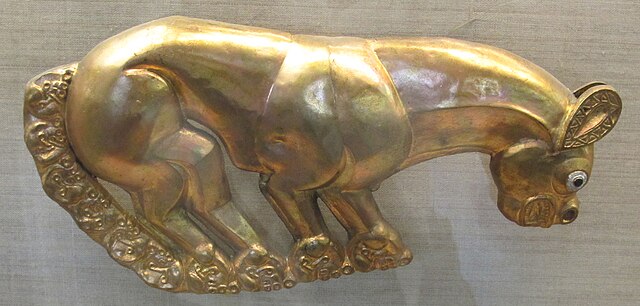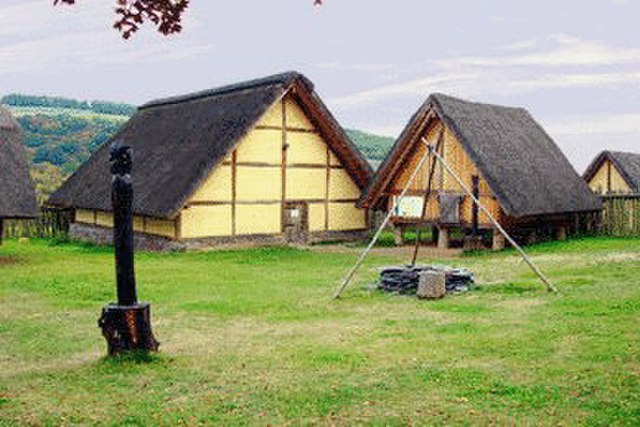The 1st millennium BC, also known as the last millennium BC, was the period of time lasting from the years 1000 BC to 1 BC. It encompasses the Iron Age in the Old World and sees the transition from the Ancient Near East to classical antiquity.
Relief of King Ashurbanipal of Assyria hunting a Mesopotamian lion, from the Northern Palace in Nineveh, c. 645-635 BC
Augustus Caesar, the first emperor of the Roman Empire
Scythian gold plaque with panther (late 7th century BC)
The Parthenon, Athens (5th century BC)
The Celts or Celtic peoples were a collection of Indo-European peoples in Europe and Anatolia, identified by their use of Celtic languages and other cultural similarities. Major Celtic groups included the Gauls; the Celtiberians and Gallaeci of Iberia; the Britons, Picts, and Gaels of Britain and Ireland; the Boii; and the Galatians. The relation between ethnicity, language and culture in the Celtic world is unclear and debated; for example over the ways in which the Iron Age people of Britain and Ireland should be called Celts. In current scholarship, 'Celt' primarily refers to 'speakers of Celtic languages' rather than to a single ethnic group.
The Dying Gaul, an ancient Roman statue
The La Tène–style ceremonial Agris Helmet, 350 BC, Angoulême city Museum in France
Reconstruction of the Hochdorf Chieftain's Grave, Stuttgart, Germany
Reconstruction of a late La Tène period settlement in Altburg near Bundenbach, Germany (first century BC)








